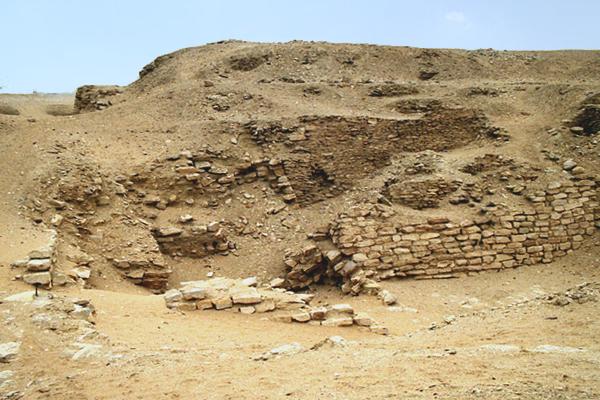The Buried Pyramid (also called the Pyramid of Sekhemkhet) is an unfinished step pyramid constructed ca. 2645 BC for Sekhemkhet Djoserty. This pharaoh was the second of the Third Dynasty of Ancient Egypt, which reigned over Egypt circa 2686–2613 BC and is usually placed at the beginning of the Old Kingdom of Egypt. Many historians believe that the third dynasty played an important role in the transition from Early Dynastic Period of Egypt to the Age of the Pyramids.
The pyramid may be visited, but the public is not allowed access to the base and substructures.
Sekhemkhet Djoserty was also the successor to the better-known pharaoh Djoser, who was buried in his famous step pyramid at Saqqara. The buried pyramid was originally modelled after Djoser’s step pyramid and is located a few hundred metres southwest. It is also arguable that the pyramid of Sekhemkhet was originally designed to surpass the step pyramid of Djoser but barely made it above ground level and hence was given the name the Buried Pyramid. Its incompletion is thought to have been due to Sekhemkhet's short reign as ruler, which was approximately six years.




